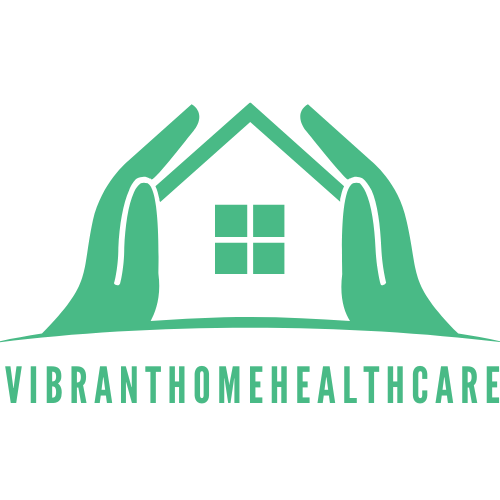Cardiac diseases remain a leading cause of death worldwide, affecting millions and reshaping lives. From coronary artery disease to heart failure, these conditions pose significant health risks that require attention and understanding. With lifestyle factors and genetics playing crucial roles, awareness of cardiac health is more important than ever.
As medical advancements continue to evolve, so does the knowledge surrounding prevention and treatment. Individuals can take proactive steps to safeguard their heart health, reducing the impact of these diseases. This article delves into the various types of cardiac diseases, their symptoms, and effective management strategies, empowering readers to make informed choices for a healthier future.
Table of Contents
ToggleOverview Of Cardiac Diseases
Cardiac diseases encompass a range of conditions that affect the heart’s structure and function. Understanding these diseases, including their types and prevalence, is crucial for addressing heart health effectively.
Definition And Types
Cardiac diseases refer to any disorder affecting the heart. Common types include:
- Coronary Artery Disease (CAD): This occurs when arteries supplying blood to the heart become narrowed or blocked, leading to chest pain or heart attacks.
- Heart Failure: A condition where the heart cannot pump blood effectively, resulting in fatigue, fluid retention, and shortness of breath.
- Arrhythmias: Irregular heartbeats that can either be too fast or too slow, potentially causing palpitations or fainting.
- Valvular Heart Disease: Involves dysfunction of heart valves, which may cause blood flow issues and require surgical intervention.
- Congenital Heart Defects: Structural abnormalities present at birth that affect normal heart function.
Prevalence And Statistics
Cardiac diseases represent a significant global health concern. Statistics indicate that:
- Approximately 290 million people worldwide suffer from heart disease.
- In the United States alone, about 697,000 deaths occur annually due to heart disease, making it the leading cause of death.
- Heart disease causes 1 in 5 deaths every year in the U.S.
- More than 30% of global deaths relate to cardiovascular diseases, highlighting their prevalence.
These statistics affirm the urgency of awareness and proactive management regarding cardiac health.
Causes Of Cardiac Diseases

Cardiac diseases arise from various factors that can significantly impact heart health. Understanding these causes helps in the prevention and management of these conditions.
Genetic Factors
Genetic factors play a crucial role in the development of cardiac diseases. Family history of heart conditions increases the risk for individuals. Specific genetic mutations can lead to hypertrophic cardiomyopathy or familial hypercholesterolemia. Individuals with first-degree relatives affected by heart diseases are statistically at higher risk. Genetic predispositions manifest through inherited cholesterol levels, blood pressure, and other cardiovascular traits.
Lifestyle Influences
Lifestyle influences significantly contribute to the onset of cardiac diseases. Poor dietary habits, such as high intake of saturated fats and sugars, lead to obesity and hypertension. Physical inactivity increases the risk of heart failure and coronary artery disease. Smoking remains one of the leading preventable causes of cardiac conditions. Excessive alcohol consumption raises blood pressure and contributes to an irregular heartbeat. Stress management, regular exercise, and healthy eating behaviors improve heart health and reduce potential risks.
Symptoms And Diagnosis
Understanding the symptoms of cardiac diseases and the relevant diagnostic procedures supports early detection and management. This section highlights common symptoms associated with heart conditions and outlines procedures for accurate diagnosis.
Common Symptoms
Individuals experiencing cardiac diseases may exhibit a variety of symptoms, which include:
- Chest pain or discomfort: Often described as a squeezing or pressure sensation.
- Shortness of breath: Occurs during physical activities or at rest, impacting daily activities.
- Fatigue: Unusual tiredness can indicate heart strain or failure.
- Palpitations: Noticeable irregular or rapid heartbeats may signal arrhythmias.
- Swelling: Edema in the legs, ankles, or abdomen indicates fluid retention.
- Dizziness or lightheadedness: Can result from low blood flow or arrhythmias.
- Nausea or vomiting: Often accompanies other heart-related symptoms.
Awareness of these symptoms aids in timely medical consultations, especially when experienced consistently.
Diagnostic Procedures
Multiple diagnostic procedures help confirm the presence of cardiac diseases. Key methods include:
- Electrocardiogram (ECG): Records electrical activity to detect arrhythmias or heart abnormalities.
- Echocardiogram: Uses sound waves to create images, allowing assessment of heart structure and function.
- Stress testing: Measures heart performance during exercise, identifying issues not seen at rest.
- Coronary angiography: Visualizes coronary arteries through dye and X-ray imaging, highlighting blockages or narrowing.
- Holter monitor: Provides 24-hour ECG monitoring, capturing intermittent symptoms.
Each diagnostic procedure plays a crucial role in pinpointing cardiac conditions, facilitating effective treatment planning.
Treatment Options
Various treatment options exist for managing cardiac diseases. These range from lifestyle changes to medications and emergency surgical interventions, tailored to address specific conditions and improve overall heart health.
Lifestyle Changes
Adopting healthier lifestyle changes significantly impacts cardiac health. Key modifications include:
- Dietary Adjustments: Emphasizing fruits, vegetables, whole grains, and lean proteins while reducing saturated fats, sugars, and sodium.
- Regular Exercise: Engaging in at least 150 minutes of moderate-intensity aerobic activity weekly helps strengthen the heart.
- Smoking Cessation: Quitting smoking reduces risks associated with heart disease and improves lung function.
- Weight Management: Maintaining a healthy weight lowers blood pressure and cholesterol levels, contributing to better heart health.
- Stress Reduction: Utilizing relaxation techniques, such as yoga or meditation, positively affects heart health.
Medications
Several medications are effective in managing cardiac diseases. These include:
- Antihypertensives: Drugs like ACE inhibitors, beta-blockers, and diuretics lower blood pressure and reduce strain on the heart.
- Antiplatelet Agents: Aspirin and clopidogrel prevent blood clots from forming in narrowed arteries, minimizing heart attack risk.
- Statins: These medications lower cholesterol levels, reducing plaque buildup in arteries and improving blood flow.
- Anticoagulants: Medications such as warfarin prevent clot formation in patients with arrhythmias, particularly atrial fibrillation.
- Beta-Blockers: These control heart rate and reduce workload on the heart, often prescribed for heart failure or arrhythmias.
Surgical Interventions
- Coronary Artery Bypass Grafting (CABG): A surgical method that creates new pathways for blood flow around blocked arteries.
- Angioplasty and Stenting: A minimally invasive procedure that opens narrowed coronary arteries using a balloon and places a stent to keep it open.
- Valve Repair or Replacement: Surgical options to correct or replace damaged heart valves, improving blood flow and heart efficiency.
- Heart Transplant: An option for patients with end-stage heart failure when other treatments fail, involving the replacement of a diseased heart with a healthy donor heart.
- Ablation Therapy: A procedure to correct arrhythmias by destroying areas of heart tissue that cause irregular rhythms.
Prevention Strategies
Prevention of cardiac diseases relies heavily on proactive measures. Incorporating healthy lifestyle choices and regular screening can significantly reduce the risk of developing heart conditions.
Healthy Lifestyle Choices
- Adopt a balanced diet: Focus on consuming fruits, vegetables, whole grains, lean proteins, and healthy fats. Limiting saturated fats, trans fats, and sodium is crucial.
- Engage in regular physical activity: Aim for at least 150 minutes of moderate aerobic exercise or 75 minutes of vigorous activity weekly. Incorporate strength training exercises at least twice a week.
- Maintain a healthy weight: Achieving and sustaining a healthy body mass index (BMI) is essential for reducing heart disease risk. Monitor caloric intake and engage in physical activity.
- Quit smoking: Ending tobacco use substantially lowers the risk of heart disease and improves overall cardiovascular health. Seek support programs or medications to assist in cessation.
- Limit alcohol consumption: Alcohol should be consumed in moderation, defined as up to one drink a day for women and up to two drinks a day for men.
- Manage stress: Utilize stress management techniques such as mindfulness, meditation, yoga, or regular physical activity to maintain emotional and physical health.
Regular Screening
- Cholesterol level checks: Screen cholesterol levels at least every four to six years in adults. Elevated levels can indicate higher heart disease risk.
- Blood pressure monitoring: Measure blood pressure regularly. Normal readings typically are below 120/80 mm Hg. High blood pressure increases the risk of heart conditions.
- Diabetes screening: Adults aged 45 and older or those with risk factors should undergo diabetes testing. Early detection can prevent complications associated with heart disease.
- Body weight assessments: Regularly assess BMI and waist circumference. Monitoring body weight helps in recognizing changes that may indicate a need for lifestyle adjustments.
- Cardiac risk assessments: Consult with healthcare providers about a comprehensive risk assessment that includes family history, lifestyle factors, and existing health conditions.
Implementing these strategies can lead to a significant reduction in cardiac disease prevalence, promoting overall heart health.
Cardiac diseases continue to pose a significant threat to global health. Awareness of risk factors and symptoms is crucial for early detection and effective management. By embracing healthy lifestyle choices and staying informed about personal heart health, individuals can take vital steps toward prevention.
Regular check-ups and screenings play an essential role in identifying potential issues before they escalate. As medical advancements evolve, the focus on proactive measures becomes even more critical. Prioritizing heart health not only enhances individual well-being but also contributes to reducing the overall burden of cardiac diseases in society.




